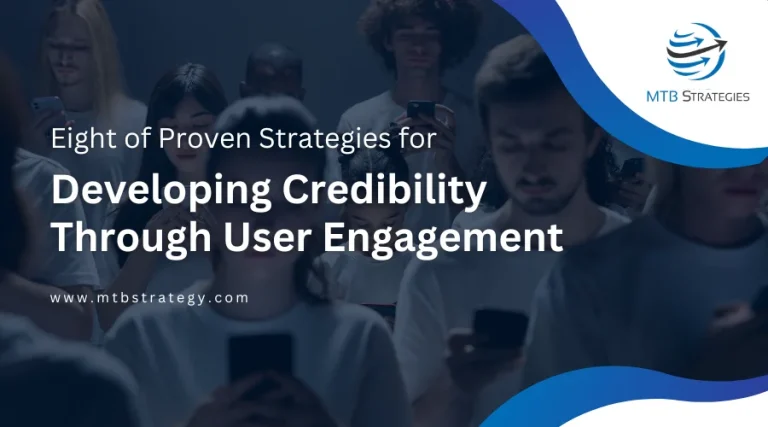Customers are created through attention, and brands that fail to attract the proper attention pay the repercussions. An out-of-date model of the marketing funnel is where the issue starts. Fundamentally flawed data and a lack of investment in genuine, long-term client connections make it worse.
Additionally, attracting customers’ attention is only worthwhile if you provide them with worthwhile content. Millions of eyes on something for which people aren’t ready or wholly uninterested have very little value. A large portion of contemporary marketing interrupts you with information that you don’t care about.
In highly competitive, high-value markets, it is more difficult to establish genuine customer connections due to these and other considerations. Either a brand forges genuine connections with customers, or it blends in with the hordes of undifferentiated competition.
Our ideas about client relationships, the customer journey, and what real customer attention looks like are all continuously changing. Here are some tips for marketers who are thinking ahead.
The sales funnel is out of date.
The sales funnel is still in use. It still functions in part. When we acknowledge some unpleasant facts about the client’s journey, it simply becomes outdated.
In the ideal scenario employing customer personas, we believe consumers search for a product, evaluate competing options, and then make a choice.
Never has reality been so straightforward.
The buyer’s journey is chaotic in real life. It doesn’t follow a linear path or a one-size-fits-all philosophy. It is frequently stopped, started, placed on pause, abandoned, resumed, and other ways. The funnel, at best, is a squiggly line and does not go directly from awareness to transaction.
To effectively align with their audiences, marketers must accept this fact.
The consumer journey and nonlinearity
Here is where marketing is at the moment, but this is where your audience is in reality:
Considering the turbulent customer experience
Missed chances to promote connection, brand trust and equity, and significant engagement result from the discrepancy between the old funnel and the actual customer experience. When the marketing funnel is so deceptive, serving audiences content, advertisements, or promotional materials intended to generate transactions doesn’t work.
Marketers should act as issue solvers rather than try to push clients through the funnel. interacting with customers, learning about their issues, and providing relief for their top complaints. More transactions necessitate greater trust, which develops when consumers receive significant value from a brand prior to making a purchase.
Instead of focusing only on revenue, brands must engage in relationships. This philosophical shift entails producing valuable, problem-focused content that audiences desire and simply being available to them whenever, wherever, and however, they need it.
95:5 principle
Know about the 80:20 rule? The 95:5 guideline is something that marketers are also starting to realize. It claims that 95% of in-market audiences aren’t yet looking to buy and the 5% that are divided.
A sizable portion of the audience is at the transaction level, with the majority of the audience still in the awareness and research stages. Although this has been used in B2B transactions, it applies to B2C and D2C interactions.
The issue? Marketers believe driving customers down the sales funnel and prioritizing transactions would increase sales. The data reveals very different information about consumers. We must prioritize the needs of the consumer and adapt our methods to reflect the real behavior of our target audiences.
The present (broken) marketing mix
– BOFU/transactional targeting attempts, 95% demand capture
5% demand creation – TOFU/MOFU targeting initiatives like content that offers solutions
How do you promote connection and trust while serving transactional material that no one wants? is our query.
The perfect marketing combination is:
- 95% increase in demand
- Demand capture of 5%
The solution – To create the perfect blend, the “old way” must be turned on its head. adopting a strategy that places a focus on consumer insights and actual human behavior.
What buyers genuinely desire
Consumer audiences are seen as problem-solvers, and brands as problem-solvers. Customers look for answers in the form of information, products, or services.
Applying our ideal 95:5 mix, a brand’s top priority should be informational content because the majority of consumers aren’t prepared to make a purchase. By giving customers exactly what they want, brands can create alignment and solid trust. Offering value upfront fosters trust, which is rewarded with sales. That is impossible with transactional tunnel vision.
Disclosed Customer Preferences
Excellent, the public wants answers… What, though?
Consumer intent data can be found from a variety of reliable sources, including reviews, user-generated content, polls, and conventional focus groups. But one stands out above the rest in providing consistently updated, truthful information: search intent data.
Every time a user conducts a search, Google meticulously records their search terms. Users ask detailed, often humiliating, confidential, or unusual inquiries that they might not disclose to their closest friends because of the intimate and valuable nature of the search.
Your marketing will be able to reach your customers whenever and wherever they are if you use this highly accurate data to determine exactly what they want. The best thing is that it can be applied to all facets of brand operations, including identifying new markets, trends, and customers.
The precise demands of your audience are revealed by search intent data, which also tells what you can do to capture their sincere interest and gain their trust.
Consumer attention redefined
The value of attention varies depending on its type and the infrastructure a brand has in place to capitalize on it. Attention is not all created equal.
There are two kinds of attention:
- Earned: Genuine, natural attention that adds enough value to hold a consumer’s interest and convert it into conversions, brand equity, and trust. By gaining audience trust, this attention is generated and has a significant return on investment.
- Unearned: Attention obtained by conventionally paid sources. This attention is paid for, so it isn’t as effective as the attention you gain by assisting your audience in resolving their issues. It does not promote trust but ineffectively draws attention to your brand. It may, at worst, alienate customers. ROI in this case is constrained and not optimized.
Unearned attention is not necessarily negative; rather, it strives to force interactions with customers while solution-rich material works to gain attention. By producing outstanding content, you not only attract attention but also increase the effect of the attention you already have.
The asset infrastructure and attention ratio
The balance and order of earned versus undeserved attention influence a brand’s return on investment, effectiveness, and cost per customer. Building trust and preparing your audience through priority investment in good content that attracts consumer attention. In the end, it will contribute to the value of paid, undeserved attention.
Building a content infrastructure with the goal of assisting your audience lays the path for more effective cross-channel marketing outcomes.
Your spending should largely focus on generating earned attention rather than unearned attention if you don’t have a foundation of owned assets and content that resonate with customers.
Getting noticed by earning it
By using search intent data to thoroughly understand the issues that their audience is facing, generating content that is extremely relevant, and optimizing it for discoverability when the audience requests it, brands can gain earned attention.
Brands can become dependable sources of value for the 95% of customers who are searching for answers if they act consistently with consumer search intent in mind. As audience members decide what to buy, brands are naturally rewarded for this value.
This extended play, which truly benefits your audience, yields much better results than simply paying for eyes on a channel and hoping for a high return on investment.
Paid channels have a place, but focusing on developing relationships and creating value first attracts actual customer attention and boosts marketing ROI across all channels. Strong customer relationships not only create value on their own but also guarantee that paid advertising reaches an audience that is ready to take action.
Final thoughts
These are but a few of the symptoms brought on by the more widespread issue of fractured marketing. The behavior of the real individuals who make up brand audiences has not been reflected in industry procedures.
The disconnect between brands and customers that we are seeing across some of the biggest business sectors is caused by outmoded traditional marketing techniques and viewpoints.
Thank goodness, there is a new road to follow, including solutions-driven content production, digital asset management, and optimization. Achieving meaningful, long-lasting customer relationships becomes much more doable and practical for the biggest brands in the world when using a comprehensive philosophy and strategy.






